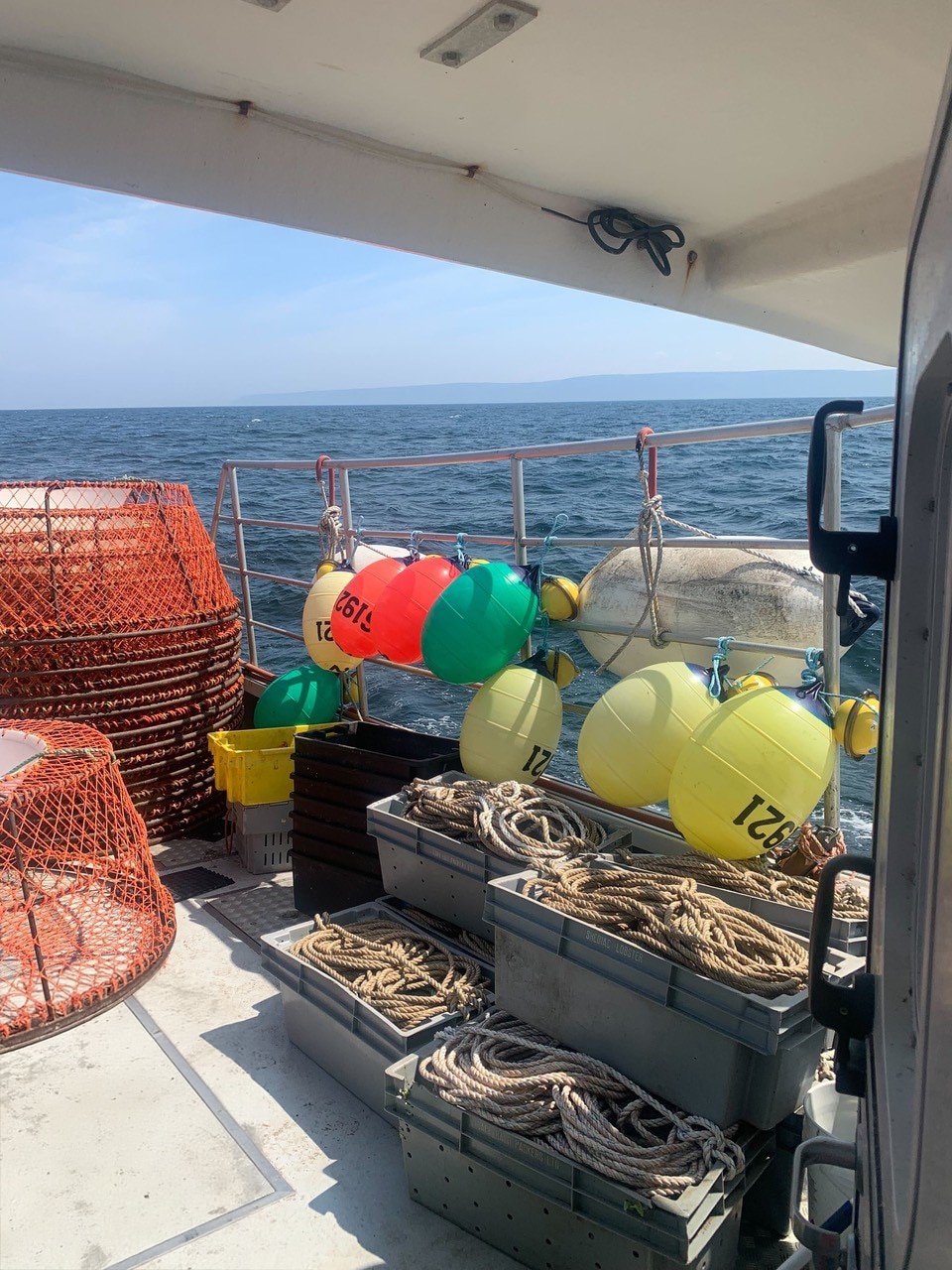Oxygen Crisis Looms: Lanternfish Extinction Could Set Off Global Marine Collapse – Indian Defence Review

Report on Ocean Deoxygenation and its Impact on Marine Ecosystems and Sustainable Development Goals
Executive Summary
A recent study published in Communications Earth & Environment reveals a critical threat to marine ecosystems stemming from ocean deoxygenation, with significant implications for achieving the Sustainable Development Goals (SDGs). Analysis of 10,000 years of fossil records indicates that lanternfish, a keystone mesopelagic species, face extinction under low-oxygen conditions. The decline of this species would severely disrupt marine food webs, impair the ocean’s capacity for carbon sequestration, and undermine global efforts related to climate action, marine biodiversity, and food security.
The Role of Lanternfish in Supporting Global Sustainability
Contribution to SDG 13: Climate Action
Lanternfish are integral to the ocean’s biological carbon pump, a natural process essential for climate regulation. Their daily vertical migration facilitates the transport of significant amounts of carbon from the surface to the deep ocean, where it is sequestered.
- Carbon Sequestration: The nightly migration of lanternfish populations transports approximately four gigatons of carbon to the deep ocean annually.
- Climate Regulation: This process helps mitigate climate change by reducing atmospheric CO2 levels.
- Threats from Deoxygenation: A decline in lanternfish populations could reduce this carbon export by up to 25%, creating a feedback loop that accelerates atmospheric warming and further exacerbates ocean deoxygenation, directly impeding progress on SDG 13.
Pillar of SDG 14: Life Below Water
As one of the most abundant vertebrates, lanternfish are a cornerstone of marine biodiversity and ecosystem stability. Their potential collapse represents a direct threat to the health and resilience of ocean ecosystems.
- Keystone Species: Lanternfish serve as a primary food source for a wide range of predators, including tuna, whales, squid, and seabirds.
- Food Web Stability: The loss of lanternfish would trigger cascading effects, destabilizing marine food webs and leading to a significant loss of biodiversity.
- Ecosystem Health Indicator: The historical record shows that lanternfish populations collapsed during severe deoxygenation events, making them a critical indicator for the future health of deep-sea ecosystems under current climate change scenarios.
Historical Analysis and Future Risks
Evidence from Paleoceanographic Records
The study utilizes sediment cores and fossilized otoliths (ear bones) from the Aegean Sea to reconstruct a 10,000-year history of fish populations in relation to ocean oxygen levels. The findings provide a stark historical precedent for current threats.
- During the Sapropel S1 event, a period of severe oxygen depletion, lanternfish populations were nearly eliminated.
- This historical data corroborates scientific expectations that the current expansion of oxygen minimum zones will severely deplete mesopelagic fish communities.
Cascading Impacts on Sustainable Development
Threats to Food Security and Economic Stability
The decline of lanternfish has far-reaching consequences beyond marine ecosystems, directly affecting human well-being and economic systems.
Implications for Key SDGs:
- SDG 14 (Life Below Water): The primary impact is the potential collapse of a vital fish population, leading to irreversible damage to marine biodiversity and ecosystem function.
- SDG 2 (Zero Hunger): The disruption of the marine food chain would threaten major commercial fisheries, such as tuna, which depend on lanternfish as a food source. This poses a significant risk to global food supplies and the nutrition of communities reliant on seafood.
- SDG 13 (Climate Action): The impairment of the biological carbon pump would weaken a critical natural climate solution, making the goals of the Paris Agreement more difficult to achieve.
- SDG 8 (Decent Work and Economic Growth): The collapse of fisheries dependent on the lanternfish food web would jeopardize the livelihoods of millions of people employed in the fishing and seafood industries.
Which SDGs are addressed or connected to the issues highlighted in the article?
SDG 14: Life Below Water
- The article’s central theme is the threat of ocean deoxygenation to marine life, specifically lanternfish. It discusses the disruption of marine ecosystems, food chains, and the overall health of the ocean, which are core concerns of SDG 14.
SDG 13: Climate Action
- The article explicitly links the ocean’s oxygen crisis to climate change, citing rising ocean temperatures as a primary cause. It also details the critical role of lanternfish in climate regulation through the biological carbon pump, highlighting how their decline could accelerate atmospheric warming.
SDG 2: Zero Hunger
- The potential collapse of lanternfish populations is shown to have cascading effects on commercial fisheries. The article states this could “devastate commercial fisheries” and impact “marine food webs that humans rely on,” directly connecting the issue to food security and the sustainability of food sources from the ocean.
What specific targets under those SDGs can be identified based on the article’s content?
SDG 14: Life Below Water
- Target 14.2: By 2020, sustainably manage and protect marine and coastal ecosystems to avoid significant adverse impacts, including by strengthening their resilience, and take action for their restoration in order to achieve healthy and productive oceans.
- The article focuses on the potential collapse of the lanternfish population, which would be a “significant adverse impact” on the deep-sea ecosystem. The study’s warning about the destabilization of marine food webs directly relates to the need to protect these ecosystems.
- Target 14.3: Minimize and address the impacts of ocean acidification, including through enhanced scientific cooperation at all levels.
- While the article focuses on deoxygenation and warming, these are intrinsically linked to the broader issue of changing ocean chemistry caused by increased atmospheric CO2, which also causes ocean acidification. The study itself is an example of “enhanced scientific cooperation” to understand these impacts.
- Target 14.4: By 2020, effectively regulate harvesting and end overfishing, illegal, unreported and unregulated fishing and destructive fishing practices and implement science-based management plans, in order to restore fish stocks in the shortest time feasible, at least to levels that can produce maximum sustainable yield as determined by their biological characteristics.
- The article warns that the decline of lanternfish, a key food source for species like tuna, could lead to “reduced fish stocks and even the collapse of local fisheries.” This highlights the threat to the sustainability of commercial fish stocks, a key concern of this target.
- Target 14.a: Increase scientific knowledge, develop research capacity and transfer marine technology…
- The entire article is based on a scientific study that uses advanced techniques, such as analyzing 10,000 years of fossilized otoliths from sediment cores, to “increase scientific knowledge” about the past and future of marine ecosystems.
SDG 13: Climate Action
- Target 13.2: Integrate climate change measures into national policies, strategies and planning.
- The study’s findings serve as a stark warning that necessitates the integration of climate change mitigation measures into policies to prevent the predicted ecological collapse. The connection between rising temperatures, deoxygenation, and the breakdown of the carbon cycle underscores the urgency for policy action.
- Target 13.3: Improve education, awareness-raising and human and institutional capacity on climate change mitigation, adaptation, impact reduction and early warning.
- The research acts as an “early warning” system, using historical data to predict future risks. The publication and discussion of the study contribute to “awareness-raising” about the severe impacts of climate change on marine ecosystems.
SDG 2: Zero Hunger
- Target 2.4: By 2030, ensure sustainable food production systems and implement resilient agricultural practices that increase productivity and production, that help maintain ecosystems, that strengthen capacity for adaptation to climate change…
- The article’s warning about the potential collapse of commercial fisheries that “humans rely on for food” directly threatens the sustainability of food production systems. Maintaining the lanternfish population is crucial for maintaining the marine ecosystem that supports these fisheries.
Are there any indicators mentioned or implied in the article that can be used to measure progress towards the identified targets?
- Ocean Oxygen Levels: The article explicitly mentions that lanternfish populations decline when “oxygen levels in the ocean fell below a critical threshold.” Measuring the concentration and extent of low-oxygen zones is a direct indicator.
- Lanternfish Population Abundance: The study uses the abundance of fossilized otoliths to measure past populations. Monitoring current lanternfish biomass is a key indicator of ecosystem health.
- Carbon Sequestration Rate: The article quantifies the role of lanternfish in the biological pump, stating they move “roughly four gigatons of carbon downward each year” and warns of a potential “25% reduction.” This rate is a measurable indicator of a vital ecosystem service.
- Fish Stocks of Predator Species: The article implies that “reduced fish stocks” of predators like tuna would be a consequence of lanternfish decline. Monitoring the health and size of these commercial fish stocks serves as an indicator of the cascading effects.
- Ocean Temperature: Mentioned as a primary driver of deoxygenation (“As ocean temperatures rise”). Tracking ocean temperature is a fundamental indicator of the underlying climate change problem.
- Species Composition: The study notes that during past low-oxygen events, lanternfish were “replaced by surface-dwelling species like anchovies.” The ratio of deep-sea to surface-dwelling fish populations can serve as an indicator of ecosystem shifts caused by deoxygenation.
SDGs, Targets, and Indicators Analysis
| SDGs | Targets | Indicators |
|---|---|---|
| SDG 14: Life Below Water |
14.2: Protect marine and coastal ecosystems.
14.3: Minimize ocean acidification and related impacts. 14.4: Regulate harvesting and end overfishing. 14.a: Increase scientific knowledge and research capacity. |
– Lanternfish population abundance. – Species composition (e.g., ratio of deep-sea to surface-dwelling fish). – Ocean oxygen levels and size of oxygen minimum zones. – Ocean temperature. – Fish stocks of commercial species (e.g., tuna). – Number and findings of scientific studies on marine ecosystems. |
| SDG 13: Climate Action |
13.2: Integrate climate change measures into policies.
13.3: Improve education and awareness on climate change. |
– Rate of carbon sequestration by the ocean’s biological pump. – Ocean temperature trends. – Public and policy awareness based on scientific early warnings. |
| SDG 2: Zero Hunger | 2.4: Ensure sustainable food production systems. |
– Health and stability of commercial fish stocks (tuna, etc.). – Stability of marine food webs that support human food sources. |
Source: indiandefencereview.com

What is Your Reaction?
 Like
0
Like
0
 Dislike
0
Dislike
0
 Love
0
Love
0
 Funny
0
Funny
0
 Angry
0
Angry
0
 Sad
0
Sad
0
 Wow
0
Wow
0



























;Resize=805#)


















































